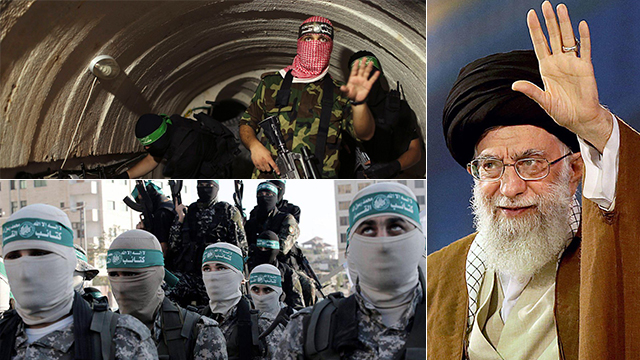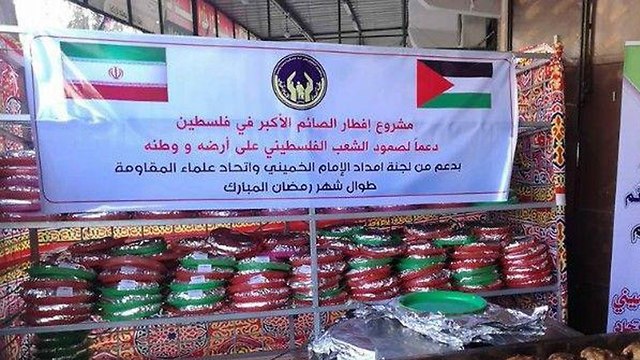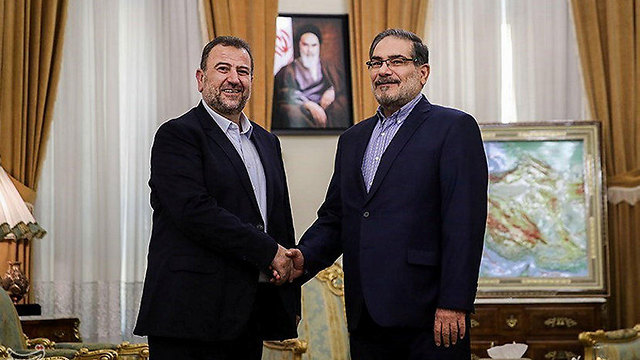

Iran's $100 million aid to Hamas and Islamic Jihad
Analysis: While aid to Hamas and Islamic Jihad is only a tenth of the funds to Hezbollah, the budget for the Lebanese organization was reduced this year amid economic hardship in Iran, but that of the Gaza terror groups remained the same; Hamas and Islamic Jihad use their funds to bolster their military wings.
Iran transfers $100 million every year to Hamas and Islamic Jihad, the two main Palestinian factions in the Gaza Strip. The money is divided as follows: $70 million is transferred to Hamas, while Islamic Jihad gets $30 million. The vast majority of this money is used by the two organizations to further bolster their military wings, instead of aiding the civilian population in the Gaza Strip.
While this is indeed a high sum of money, it is only a tenth of the annual budget that Iran transfers to Hezbollah, which is on average $1 billion annually.
Over the past year, however, Iran's budget for the Lebanese Shi'ite organization was reduced to only $800 million due to the economic crisis it is suffering from, but the budget for the Gaza Strip remained unchanged.
Since the Hamas leadership changed in the last elections, the pro-Iranian faction in the organization, which is led by Deputy Hamas leader Saleh al-Arouri and the military wing's leadership, has grown in power and influence.
And while the pro-Iranian faction in Hamas grows strong, Egypt is putting all its weight on Hamas and Fatah to implement the reconciliation agreement they signed.
Inside Palestinian sources told Ynet that there has been a power struggle inside Hamas in recent weeks between the pro-Iranian faction and the moderate faction. According to the sources, the moderate faction wants to move ahead with the reconciliation process, while the pro-Iranian faction, led by al-Arouri, is opposed to the reconciliation with Fatah, believing it will weaken Hamas's control over the Gaza Strip.
Al-Arouri arrived in the Gaza Strip on Thursday in an effort to resolve the internal strife within the organization in future discussions between him and Hamas leaders Ismail Haniyeh and Yahya Sinwar over the reconciliation process and the negotiations for a long-term ceasefire with Israel.
One of the disputed issues regarding the ceasefire agreement is Hamas's continued military buildup. For Hamas, this appears to be a critical matter in light of recent flare-ups in the Gaza Strip, which included extensive Israeli attacks.
Ynet has learned that in the latest series of attacks, the Israeli Air Force destroyed Hamas's naval capabilities, primarily sabotaging the organization's elite naval commando force. Hamas has placed high hopes on this force—wishing to maintain its element of surprise, so it can be used in the next round of fighting, as a replacement to Hamas's offensive tunnels capability, which will be rendered useless because of Israel's underground wall project along the Gaza border.
Defense Minister Avigdor Lieberman on Thursday announced his decision to again halt the transfer of fuel and gas into the Gaza Strip through the Kerem Shalom crossing because of the continued launches of incendiary balloons at Israel.
While Hamas did order its fighters to stop sending incendiary balloons, it also decreed that only children under the age of 14 are allowed to participate in this activity, and that it would be carried out only from urban residential areas, to make it difficult for the IDF to attack these children squads for fear of intenational criticism.


















